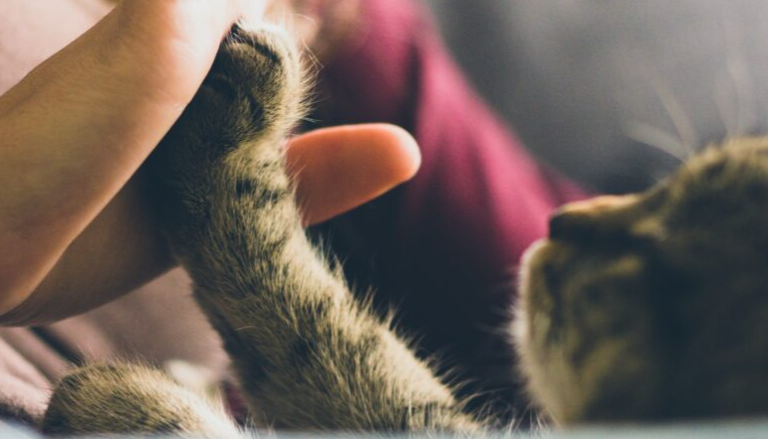Notifications

If you’ve ever watched a cat rhythmically pressing its paws into a soft surface—like a blanket, your lap, or even another pet—you’ve witnessed an adorable behavior known as kneading. Often called "making biscuits", kneading is one of the most common and fascinating feline behaviors. While it’s typically associated with comfort and contentment, kneading serves multiple purposes, from marking territory to expressing affection.
But why do cats knead with their paws? Is it instinctual, or does it serve a deeper purpose? In this article, we’ll explore the science, history, and possible meanings behind this endearing cat behavior.
Kneading is the rhythmic motion of a cat pushing its paws alternately against a soft surface. Some cats use their claws, while others keep their paws relaxed. The action resembles a baker kneading dough, which is why it’s often called "making biscuits."
Cats may knead on:
Not all cats knead, but for those that do, it’s often a sign of comfort, security, and instinctual behavior.
Kneading begins in kittenhood. When nursing, kittens press their paws against their mother’s belly to stimulate milk flow. This instinctual behavior helps them get nourishment while also reinforcing the bond with their mother.
Many cats continue kneading into adulthood, even though they no longer nurse. It becomes a source of comfort, reminding them of their early days of warmth and security.
Cats have scent glands in their paws, which release pheromones when they knead. This means that every time a cat kneads a blanket, cushion, or person, they’re marking it as their territory.
Kneading is a way for cats to:
So, when your cat kneads on you, take it as a compliment—they’re claiming you as part of their world!
If your cat kneads your lap or chest, it’s often a sign of love and trust. Kneading is associated with positive memories from kittenhood, and when a cat kneads on you, it means they feel safe, comfortable, and bonded with you.
Some cats will even purr or drool while kneading, further expressing their happiness.
Wild cats, such as lions and leopards, often pat down grass or foliage before lying down to rest. This instinct helps them create a comfortable and safe resting place. Domestic cats may have inherited this behavior, which is why they knead blankets, beds, or other soft surfaces before settling in for a nap.
Kneading can also be a form of stress relief for cats. Just as humans find comfort in repetitive actions (like fidgeting or rocking), cats may knead when they are anxious or seeking comfort.
If a cat kneads excessively or starts kneading in stressful situations, it might be their way of calming themselves down.
In some cases, kneading is linked to reproductive instincts. Female cats may knead more when they are in heat, signaling their readiness to mate. This behavior is usually accompanied by other signs, such as increased vocalization and restlessness.
Some cats knead gently with retracted claws, while others extend their claws, which can sometimes be painful for their owners! This is because:
Never punish your cat for kneading—it’s a natural and comforting behavior. Instead, gently redirect them to a more suitable surface if necessary.
Not all cats knead, and that’s completely normal. Some cats outgrow the behavior, while others may show affection in different ways, like head-butting or rubbing against you.
However, if a cat that used to knead suddenly stops, it might be a sign of discomfort, arthritis, or stress, so it’s worth monitoring their behavior.
Kneading is a healthy and natural behavior, so you should generally allow your cat to do it. However, if your cat kneads too aggressively or uses their claws on delicate furniture, here are some tips:
✔ Provide a designated kneading spot, like a soft blanket or cat bed.
✔ Trim their claws regularly to minimize discomfort.
✔ Place a soft cushion on your lap to protect your skin.
✔ Gently redirect their kneading if they do it on fragile furniture.
Never punish your cat for kneading—this can create fear or anxiety. Instead, offer positive reinforcement when they knead in appropriate places.
Kneading is one of the most charming and instinctual behaviors in cats. Whether they do it for comfort, territory marking, stress relief, or affection, it’s a sign that your feline friend is happy and relaxed.
So, the next time your cat starts "making biscuits" on your lap, take it as a sign of love and trust. They’re not just kneading—you’re their favorite spot in the world!
source : Why Do Cats Knead with Their Paws? Understanding the Feline “Making Biscuits” Behavior